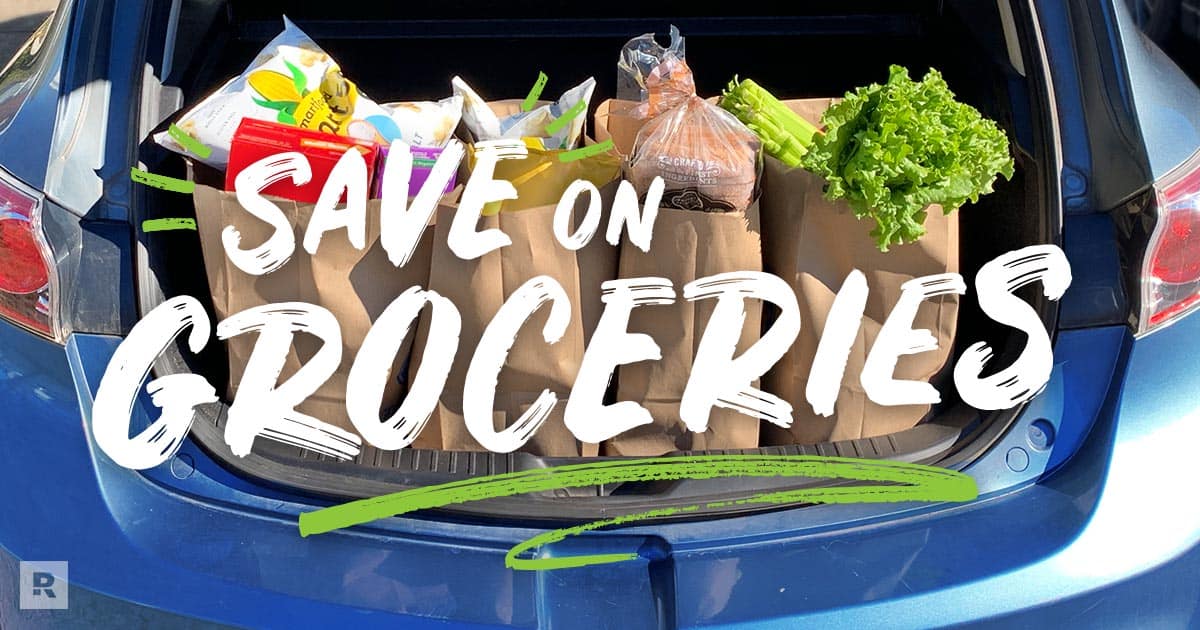
10 Grocery Savings secrets From Supermarket Insiders
1. Never Pay Full Price Again
Some frugal grocery shoppers will drive all over town to take advantage of every coupon, ad or rewards program. But there’s an easy way to learn the ins and outs of grocery store coupon policies and promotions.
“Just ask your store manager, who will happily tell you how to save the most at their store,” says Annette Economides, a frugal-living expert who, along with her husband, Steve Economides, wrote “Cut Your Grocery Bill in Half With America’s Cheapest Family.”
Check out these tips and tricks on how to score the best values.
2. Check Your Store’s Coupon Policies
Successful couponers know to look on a store’s website for the printable coupon policy to help them get the best deals. Some grocery chains double or triple coupon face values, with specific limits. For example, a coupon for 50 cents off would be worth $1.
Publix and Target allow you to use a store coupon plus a manufacturer’s coupon (this is called “stacking”; Walmart does not. But Walmart will apply any coupon overage (when savings are more than the final product cost) to your total grocery bill, while most other stores won’t. Costco accepts no manufacturer coupons.
Publix will honor certain competitors’ coupons, depending on your store location. Target honors no competing stores’ coupons.
Coupon policies change often, so make it a habit to check your store’s policy.
Ask your store manager:
- Is there a grace period on coupon expiration dates?
- Do you double or triple coupon face values?
- Can I stack coupons at your store?
- Do you have mobile coupons I can get on my phone?
- How do you apply coupon overages?
- Do you match or accept other stores’ coupons?
3. Use the Store’s Loyalty Programs
Stores try to attract you with special rewards for shopping at their stores, but not all stores have these loyalty programs. At CVS, you can earn Extra Bucks (cash built up on your Extra Care rewards card) for qualifying purchases that you can use as cash off your next purchase. There’s even a coupon machine in front of every store where Extra Care cardholders can scan their cards and get special unadvertised coupons. CVS also has a coupon app for mobile devices.
At Costco, an executive membership earns 2 percent cash-back rewards (up to $1,000 per year) on qualifying Costco purchases.
It pays to know the ins and outs of each system, so you can take maximum advantage, Economides says. Ask your store manager:
- Do you have a loyalty program?
- Do you give cash-back rewards?
- Does it provide additional savings on future purchases?
- How do I use it?
- Can these savings be combined with other manufacturer or store coupons?
4. Stock Up at Outlets and Closeouts
Outlet and closeout stores have a lot to offer, Economides says, especially when they sell a brand-name item you eat or use regularly. If these stores offer a deal on items you need regularly, you should buy as many as you can afford and stockpile them.
“Watch out, though, because some manufacturers will provide these outlets with a smaller size to sell for cheaper, so know your regular sizes and prices before buying,” Economides warns.
She also says these stores typically do not accept coupons of any type — another reason to know your prices.
Ask your store manager:
- When does the (brand) truck come each week?
- Do you always carry (name brand)?
- Do you accept any coupons?
- Do you have a loyalty program?
5. Find the Final Markdowns and Clearance Items
You can score some great bargains if you know where to look for final markdown items in your favorite stores, Economides says.
Publix provides a free-standing rack with red-stickered, reduced-price items (never meat, produce or dairy) in a specific location in each store, while CVS usually provides final clearance merchandise either at the end of an aisle in the back of the store or sometimes on the bottom shelf where the product is usually displayed.
In contrast, Walmart denotes clearance merchandise with orange or blue stickers and marks down produce, bakery and grocery products in different locations of each store.
Ask your store manager:
- How often do you mark down items at final clearance prices?
- How can I identify these clearance items?
- Where can I find these clearance items in the store?
- When during the day do you mark down or repackage perishable items, such as bakery, produce, eggs and dairy?
6. Understand Multiples and BOGOs
At some stores, a sign will say “2 for $5,” but if you buy just one, it costs $3. Other times, Economides says, 10 for $10 means that no matter how many you buy, you still get the deal price at $1 each.
“Watch out for multiples because this is how they get you to spend more than you planned and they are not always the best deal, especially if you have to buy the quantity to get the deal price,” says personal finance author and speaker Ellie Kay, who started a nonprofit to teach financial literacy to military personnel.
Buy-one-get-one deals, or BOGOs, also can get tricky. For example, at one store you might get two bags of BOGO chips for $3.99, but individually they cost $3.99. In such cases, of course, it doesn’t pay to get just one. But at another store, the same chips might be $3.29 regularly or $2 each when on sale.
Ask your store manager:
- Do I have to buy as many as the deal says to get the deal price per item?
- How often do you switch or run BOGO or multiple promotions?
7. Do the Math
“Don’t shy away from doing the math to determine the best deal. That’s what cellphone calculators are for,” Kay says.
Economides says that many stores have shelf tags that show you the per-unit price so you can compare deals without doing any math.
But let’s do the math and work out three competing offers at one store:
- 10 for $10 — 32-ounce Powerade bottles (10 x 32 ounces = 320 ounces; $10 / 320 = $.031 per ounce.)
- 3 for $5 — 64-ounce Gatorade bottles (3 x 64 ounces = 192 ounces; $5 / 192 = $.026 per ounce)
- 2 for $5 — 128-ounce Gatorade jugs (2 x 128 ounces = 256 ounces; $5 / 256 = $.019 per ounce.)
Buying the two largest jugs of Gatorade clearly gets you more for less money, but you lose the convenience of smaller bottles.
“Being able to quickly compare the deal, product size and unit price makes selecting the right one for you easier,” Economides says.
8. Savings on Meat
“Meat can be a large portion of any family’s grocery bill, but there are many ways to save, depending on the store,” Economides says.
Her best deli tip: Look for “chubs.” That’s the word for a whole-cooked ham, turkey breast or roast beef in the meat section. Then, take the chub over to the deli section and ask them to slice it. You will save more than 50 percent over brand-name and even store-name deli meats.
Also, note that many stores have different meat expiration and promotion policies. Just check the meat specials and ask the butcher.
Ask your manager:
- What is your policy on marking down meat?
- What are the choices in ground beef, turkey and chicken?
- Do you sell whole-cooked meats in the meat department?
- Can I bring a whole-cooked meat from the meat department to the deli for slicing?
9. Produce Savings in the Bag
Many stores mark down and repackage produce that might be below the standards for full-price display, but that is not the biggest secret in the produce department. It’s this: Bulk-packaged produce is usually up to 50 percent less expensive than loose produce because packaged produce is priced by the unit and not by the pound, as with loose produce.
Economides says that by law, each bag must contain at least the advertised weight. To avoid underweight-error problems, she says grocers will throw in an extra food item so you get a few more ounces in the bag.
“Just weigh your bag and see how many extra ounces are provided and pick the heaviest one for the best deal, especially if you eat a lot of apples, potatoes, grapefruits, etc.”
Ask your manager:
- What is the store’s policy for marking down produce?
- Where and when can I find marked-down produce?
10. Credit card Rewards Add up to Real Cash
Anytime a store or credit card gives cash back, you should try to take advantage of it, Kay and Economides agree.
Some retailers, such as Target and Kroger, offer discounts or points for using their store-brand debit or credit cards.
Ask your store manager:
- Does your store offer a credit or debit card that earns rewards?
- How do the rewards work and how can I use them?
- When are the rewards applied?
Other Ways to Save
“There are so many different types of promotions and ways for you to take advantage of them, and the best thing is to be as informed as possible to find the ones that work for you,” Kay says.
Here are some more specific perks at some stores:
- A CVS email program notifies you of unadvertised specials.
- At Publix, if an item scans at the register at a price that’s higher than the shelf price or advertised price, the store gives you one of those items for free.
- Target, Whole Foods and Trader Joe’s offer reusable bag rebates that take cash off your final receipt.
- Register rewards from Winn-Dixie give you coupons for your next purchase.
- You can activate a Upromise account (a Sallie Mae program) at a participating grocery store in your area to earn college money on items you’re buying and saving on already.
- Many grocery stores offer special deals on their websites.
Also Check:
Salon Billing Software: Save Your Money & Time
How to earn money by using google AdSense



